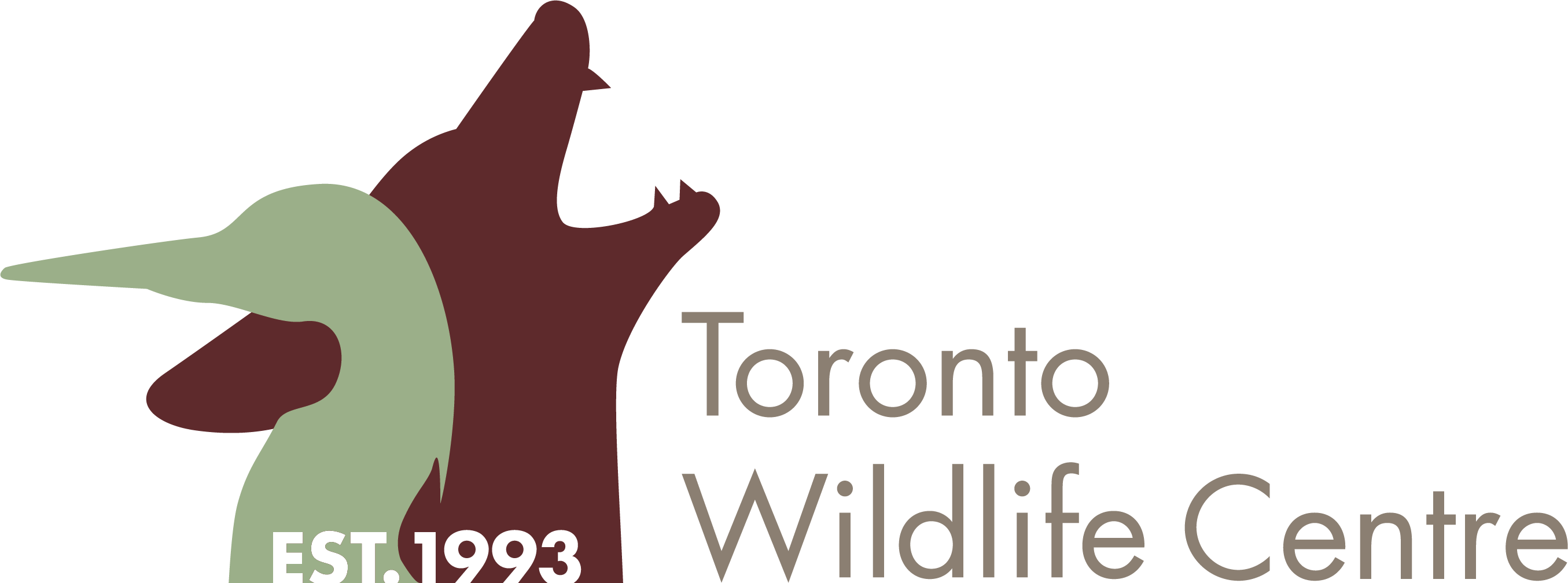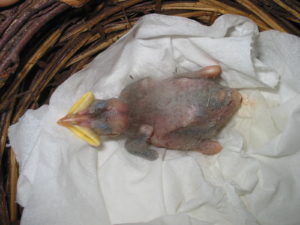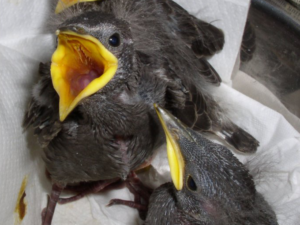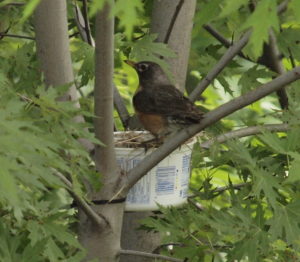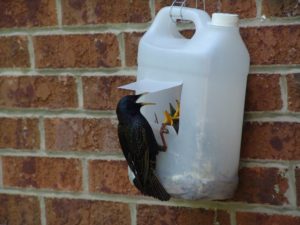If you found more than one baby
Nestling and hatchlings can’t walk or fly, so if you found a group of babies together, their nest was probably very close by. If the babies are still in a nest that has fallen or been removed, then they definitely haven’t moved very far. You can try to reunite the baby birds with their parents by making a fake nest for them.
If the nest is shaped like a bowl
For a nest shaped like a bowl or cup, find a wicker basket (like an Easter basket) or plastic container (like a margarine tub) the right size. If you use a plastic container make sure to POKE HOLES in the bottom for drainage.
Place the original nest in the basket or container. If the original nest has been destroyed, pad the bottom of the fake nest with dried grass. Don’t use tissue or paper towel because it can get wet and sticky. Don’t put the babies in the nest just yet.
Find a way to secure the nest as close as possible to where it originally was. If the nest was very high, get it up as high as you reasonably can, but don’t worry about getting it all the way up. The nest should be placed in the same tree or structure that it was built in. If it’s a bit lower than it was, that’s okay, but if you move it more a than a few feet in any other direction, the parents may not find the babies. Make sure to mount it in a spot where there’s a bit of shade and some protection from wind and rain, like below a building overhang, or under a sturdy branch.
Once the nest is secure, put the babies back inside. Watch from a distance, preferably from inside. For most species, the parents should feed the babies every 10-30 minutes, but you should watch for at least 2 hours to give them a chance to find the new nest. If you see the parents feeding the babies, that’s great! Leave the babies alone until they fledge, which shouldn’t be more than a couple of weeks.
